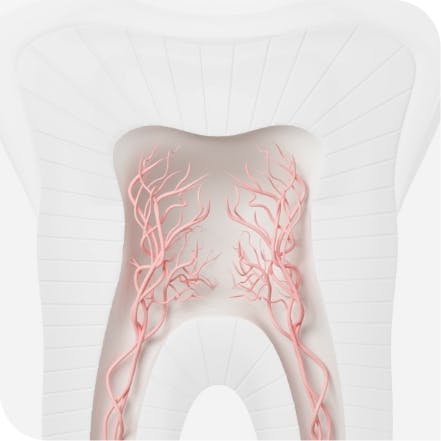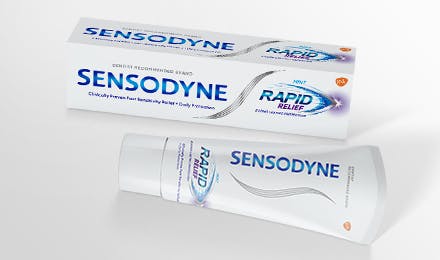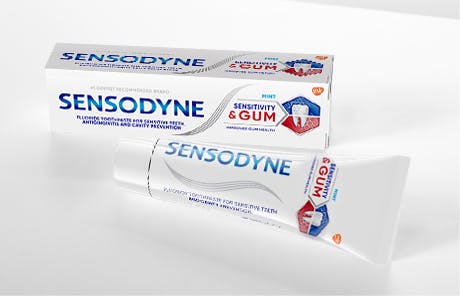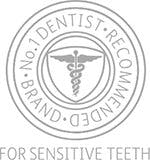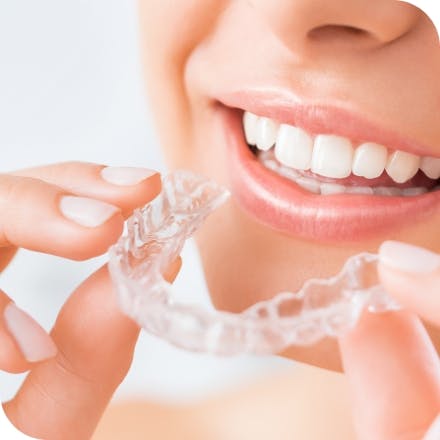What Are the Five Stages of Tooth Decay?
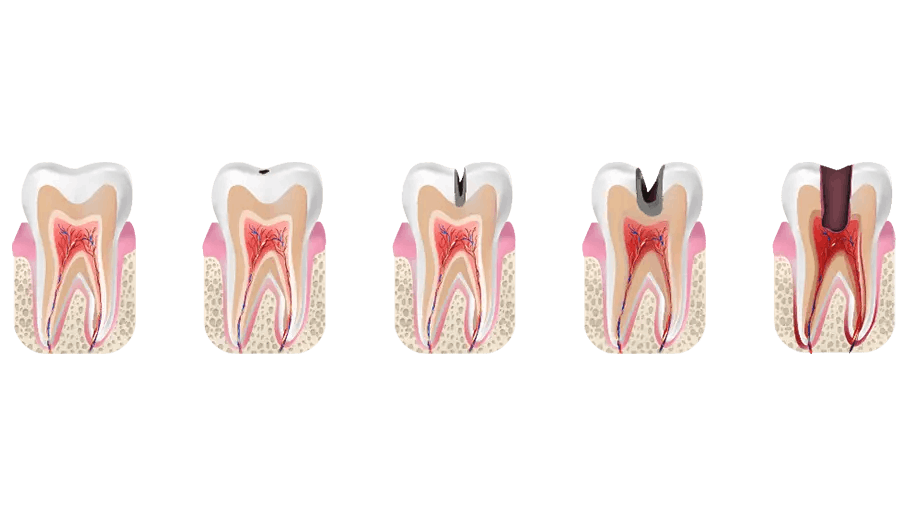
We use our mouths for more than just eating and drinking; when something is wrong with our teeth, it’s a hard sensation to ignore. A sudden toothache can be debilitating and hinder your ability to eat and express yourself. Learn about tooth decay stages and how they can affect your teeth, as well as steps you can take to protect your smile and keep your mouth healthy.
Cavity Stages
While it may be easy to confuse the early stages of a cavity for being tooth sensitivity, the two are not the same. Learn how tooth decay can start and progress through various stages if left untreated.
Demineralization
When our teeth experience demineralization, they’re going through the first stage of tooth decay. The external layer of our teeth is composed of a hard substance called enamel, which can weaken and lose some of its chemical composition due to exposure to acid.1 This acid may come directly from the food and drink we consume or be created by the bacteria in our mouths, and directly weakens the enamel on our teeth.1
Thankfully, this loss of minerals can be reversed with topical fluoride, which may be done by a dentist or by brushing your teeth with a fluoride toothpaste.1 However, if not addressed, demineralization can progress to the next stage of tooth decay.
Enamel Decay
When people think of tooth decay, they most commonly think of cavities.2 When demineralization is not addressed and acids are continually attacking and weakening the enamel of your teeth, the result is a cavity, a hole in the enamel of your tooth that allows bacteria and acid to reach the inner layers of your tooth and may cause you pain.3
Once you have a cavity, you’ll need to see a dentist for treatment.4 The decayed material will be removed and a filling will be placed to help the tooth maintain its integrity and protect it from decaying further.4 In most cases, a filling is all that’s needed to fix a cavity, but if the damage is allowed to become more severe, further treatment may be required.
Dentin Decay
The layer below your tooth’s enamel is called the dentin, and it’s much softer and much more susceptible to the damage caused by acid.3 Once decay reaches the dentin of the tooth, the pain and sensitivity experienced may increase because dentin has tiny tubules that are in contact with the tooth’s nerve.3 It’s important to act quickly when tooth decay reaches the inner layer of the tooth because it can deteriorate rapidly and cause further damage.
Pulp Damage
In the middle if your tooth is the pulp, a soft tissue that contains blood vessels, nerves and connective tissue.5 If decay reaches the pulp of a tooth you may experience sensations like severe pain while chewing and biting, sensitivity to temperatures and even cracked teeth.5 If the pulp of your tooth is affected by decay, the most common way to fix it is with a root canal, where a specialist will remove the inflamed and infected pulp from the tooth, and then fill and seal it to protect it against further damage and infection.5 The words “root canal” may strike fear into the hearts of even the most stoic of dental patients, so it’s important not to let decay progress to this point.
Abscess
If the bacterial infection has spread throughout the entire tooth, all the way to the bones that support the tooth, an abscess with swelling and pus may form, sometimes described as a pimple.6 Not only will this cause a severe, continuous toothache, but until it’s managed, the infection will remain and continue to spread and destroy tissue.6 You may lose the tooth, or the or the infection — if left untreated — can reach your bloodstream and spread to other parts of your body like your brain or your heart.6 Your dentist may prescribe antibiotics to help treat the infection and may opt for a root canal in order to save your tooth.6 In extreme cases, you may need to be admitted to the hospital in order to stop the infection.6
Preventing Tooth Decay
Help prevent tooth decay with these tips from the American Dental Association:2
Floss every day to remove build up food and bacteria.
Brush twice a day with a toothpaste that contains fluoride, like Sensodyne Repair and Protect Deep Repair Toothpaste.
Eat a balanced diet and try to limit snacking.
Visit your dentist for regular cleanings and exams.
Ask your dentist about supplemental fluoride treatments to strengthen your teeth.
While tooth decay is relatively common, it may be reversible with fluoride, a healthy diet and proper oral hygiene. Take the time to take care of your teeth.
Source Citations:
Demineralization-remineralization dynamics in teeth and bone. National Library of Medicine. https://www.ncbi.nlm.nih.gov/pmc/articles/PMC5034904/. Accessed 6/1/23.
Tooth Decay. Mouth Healthy. https://www.mouthhealthy.org/en/all-topics-a-z/tooth-decay. Accessed 6/1/23.
Cavities/tooth decay. Mayo Clinic. https://www.mayoclinic.org/diseases-conditions/cavities/symptoms-causes/syc-20352892. Accessed 6/1/23.
Tooth decay: Overview. National Library of Medicine. https://www.ncbi.nlm.nih.gov/books/NBK279514/. Accessed 6/1/23.
What Is a Root Canal? American Association of Endodontists. https://www.aae.org/patients/root-canal-treatment/what-is-a-root-canal/#. Accessed 6/1/23.
Tooth abscess. Mount Sinai Hospital. https://www.mountsinai.org/health-library/diseases-conditions/tooth-abscess. Accessed 6/1/23.
